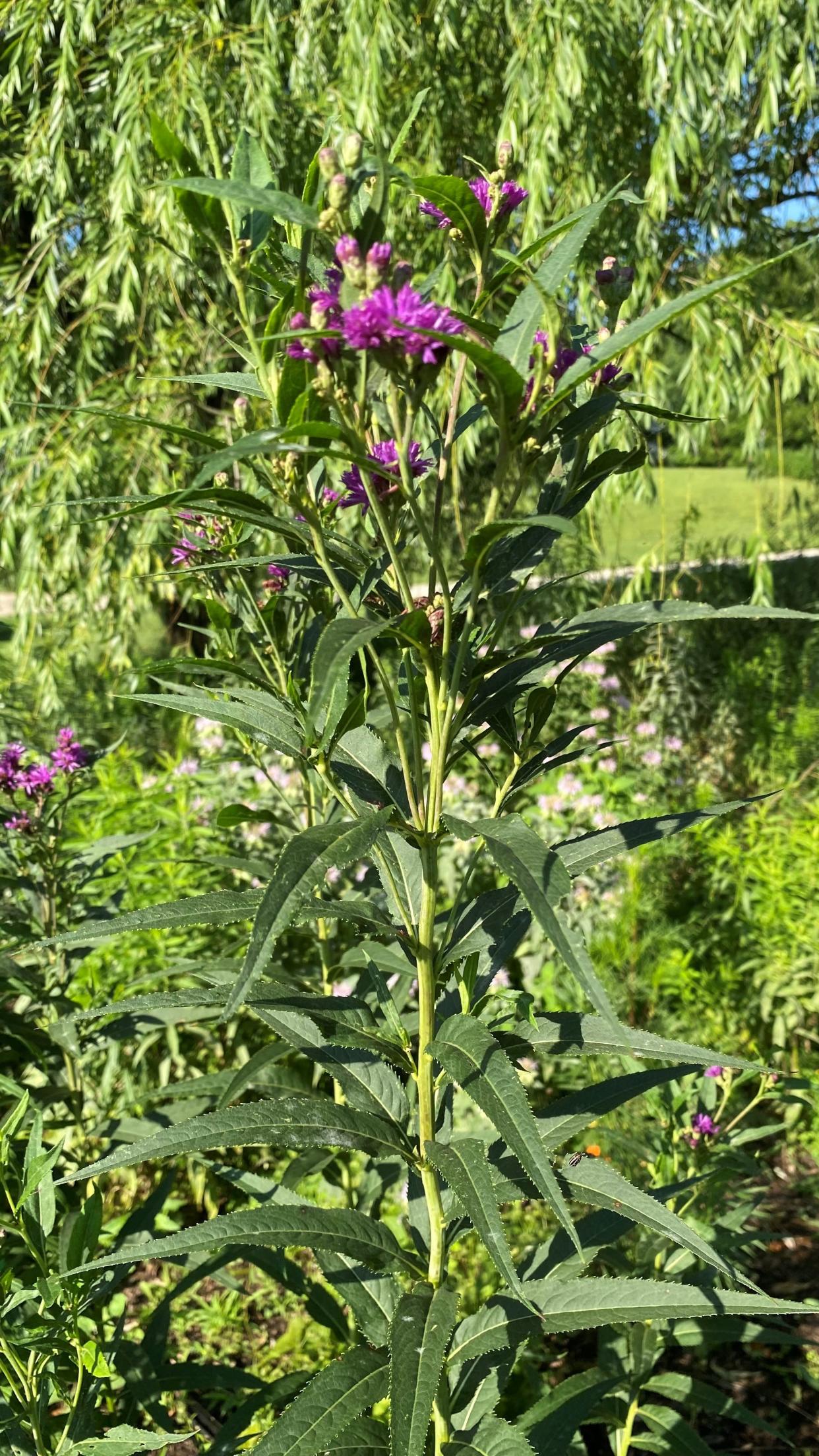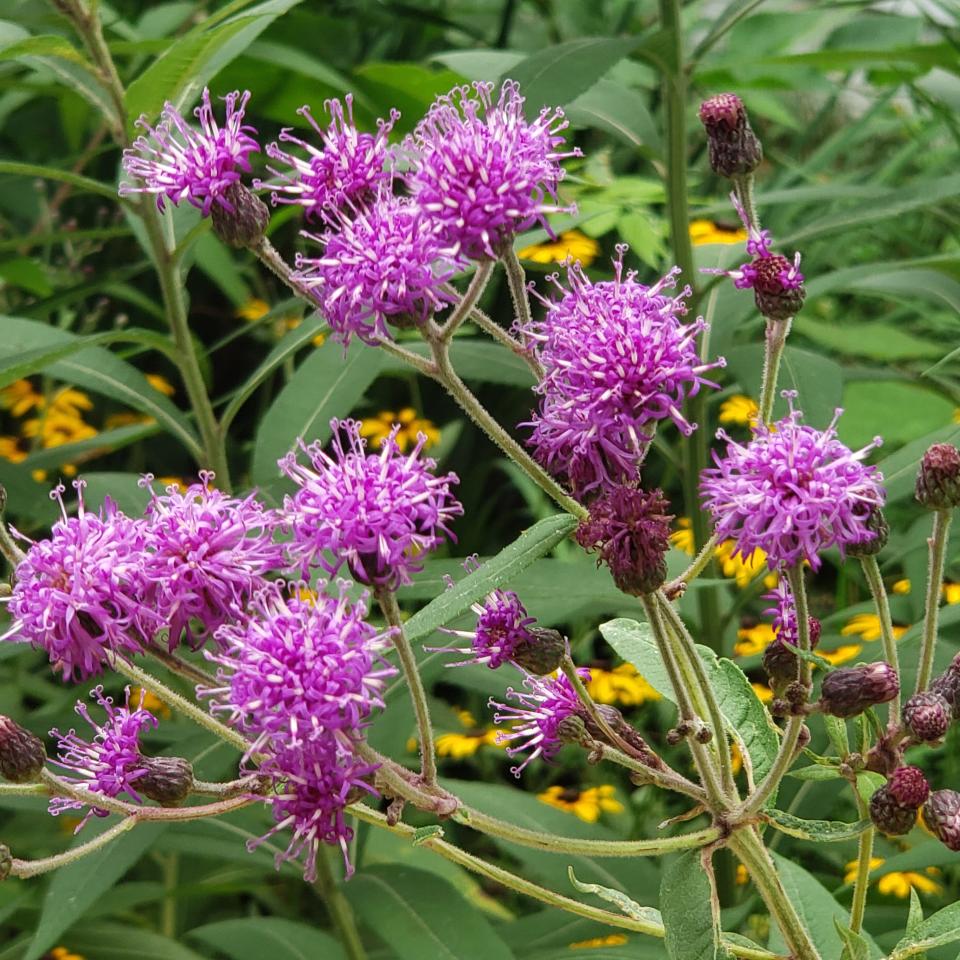Giant ironweed native plant an excellent source of nectar for butterflies and bees

Editor's note: Once a month, the OSU Extension master gardener's office of Franklin County profiles a plant that occurs naturally in central Ohio.
Vernonia gigantea, giant (or tall) ironweed, is a native herbaceous perennial wildflower in the Asteraceae family. Other members of this family are daisies, sunflowers, lettuce, artichokes, dahlias, chamomile and sage, to name a few.
The genus name, Vernonia, is in honor of an English botanist, William Vernon, who did fieldwork in North America. The species name, gigantea, is Latin and means "of giants." The common name, ironweed, refers to the toughness of the stem. Another reason for the name of ironweed is that its flowers turn a rusty color as they age.
Native Plant: Wild bergamot's kinship to mint makes it ideal for cooking, medicinal uses
The giant ironweed has been known to grow up to 12 feet tall and 6 feet wide; however, it usually grows 3 to 5 feet tall. It grows taller in moist soil, and plant height can be reduced by cutting back stems in the late spring. The stem is rigid, but smooth.
Atop the stem is a cluster of flower heads that measures up to 16 inches across. Each flower head has 10 to 30 florets of lavender, magenta or deep purple. Each floret is tubular and opens with five petals.
Native Plant: Rosa arkansana yields vitamin C-rich rose hips and food for insects, animals
Flowering from July to September, giant ironweed is an excellent nectar plant, visited by many species of butterflies and bees. It is a host plant for the American Painted Lady butterfly, and attracts swallowtails, monarchs and other large butterflies.
In contrast, however, most small mammals including deer and livestock avoid it due to its bitter-tasting foliage.

Vernonia gigantea has one of the largest ranges of the ironweed species. Although it is most common in the Ohio and lower Mississippi valleys, it can be found from Iowa, south to Texas, and as far east as New York south to Florida, with the exception of New Jersey.
It may be found naturally in prairies, grasslands, floodplains, woodlands, along roadsides, and near stream banks or forests edges. Due to its height, it is best planted in the back of a garden, as it will compete with other plants in the garden and can become weedy if not controlled.
Growing Conditions
Hardiness Zones: 5-8
Sun: full to partial shade
Water: medium to wet soil
Soil: Tolerant of all soil pH and grows well in a mixture of loam, clay-loam, or sandy-loam soils
Maintenance: low
Propagation: Easily propagated by seed or division.
Pests and diseases: No serious problems with insects or diseases.
This article originally appeared on The Columbus Dispatch: Easy-to-maintain giant ironweed provides nectar for butterflies, bees

